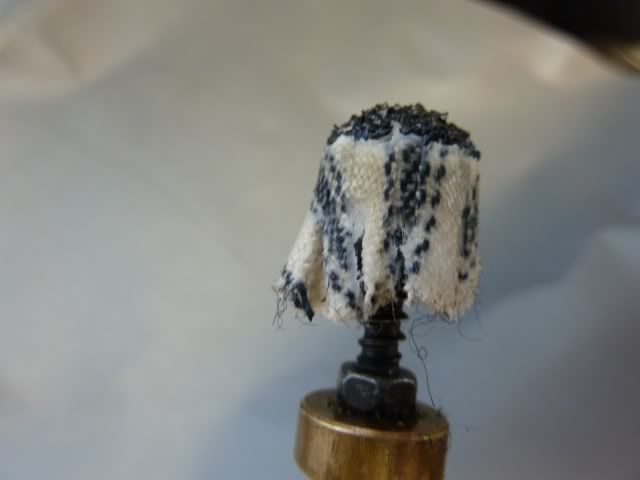The Dry lube method described by Dutch Schoultz mixes water and oils, like Ballistol, or water soluble oil from NAPA auto supply, or similar products, then lets the fabric dry off the water, leaving a much less Oily residue in the fabric to use for patches. The low percentage of oil in the patch protects the powder from oil migrating into the powder charge over time, in the barrel.
You get fouling problems whenever you use a water based lube, and use TOO Much of it. I have seen guys foul their rifles at the club range using just spit patches- if they let the gun sit around long enough to let it happen. Every other kind of water based lube- including just water- can also cause these same problems of wetting the powder( fouling it) so that it either doesn't fire, or you get a "squib" or "weak" load, that puts the ball to a lower POI on target.
The only benefit of the non-water lubes, like Wonderlube, is that you don't have this problem. My problem with wonderlube is that is made using paraffin wax, not beeswax, and the wax used is much harder and more brittle. It does not stand up well in really cold weather, when I want an effective, non-water based lube the most.
If you mix beeswax with oil-olive oil works for me, but others also work( Take a look at Stumpy's Moose milk, and Moose snot recipes up under "Articles, Charts, and links on this forum's index)--- you get a much more flexible "hard" lube, and the beeswax has some enzymes in it that are antiseptic, which keeps mold from forming on your greased patches if you store them for any length of time. That, in turn, keeps the bacteria(mold) from "Eating" and weakening the fibers in the patch material, so that the lubed patches last longer.
The 7:1, 6:1 mixes of water and oils, like mineral oil, or ballistol, or water soluble oils, work well,too. But, it takes planning to make up the mix, and then dip in the strips of fabric, then dry them flat in the sun, before they are needed at the range or to hunt. The upside is that you can lube as many strips of fabric as you desire, and when they are dried, roll them up, and store them in a plastic baggie, in your freezer( with the understanding of SWMBO!) :shocked2: :rotf: :surrender: :hatsoff:
When hunting, I have begun using a Vegetable Fiber Wad, from " Walters", as an OP wad. They are available from him, or from many suppliers, including Track of the Wolf( TOTW). This prevents any fouling of my powder charge, and provides a much better seal against gas blow-by. :hatsoff:







